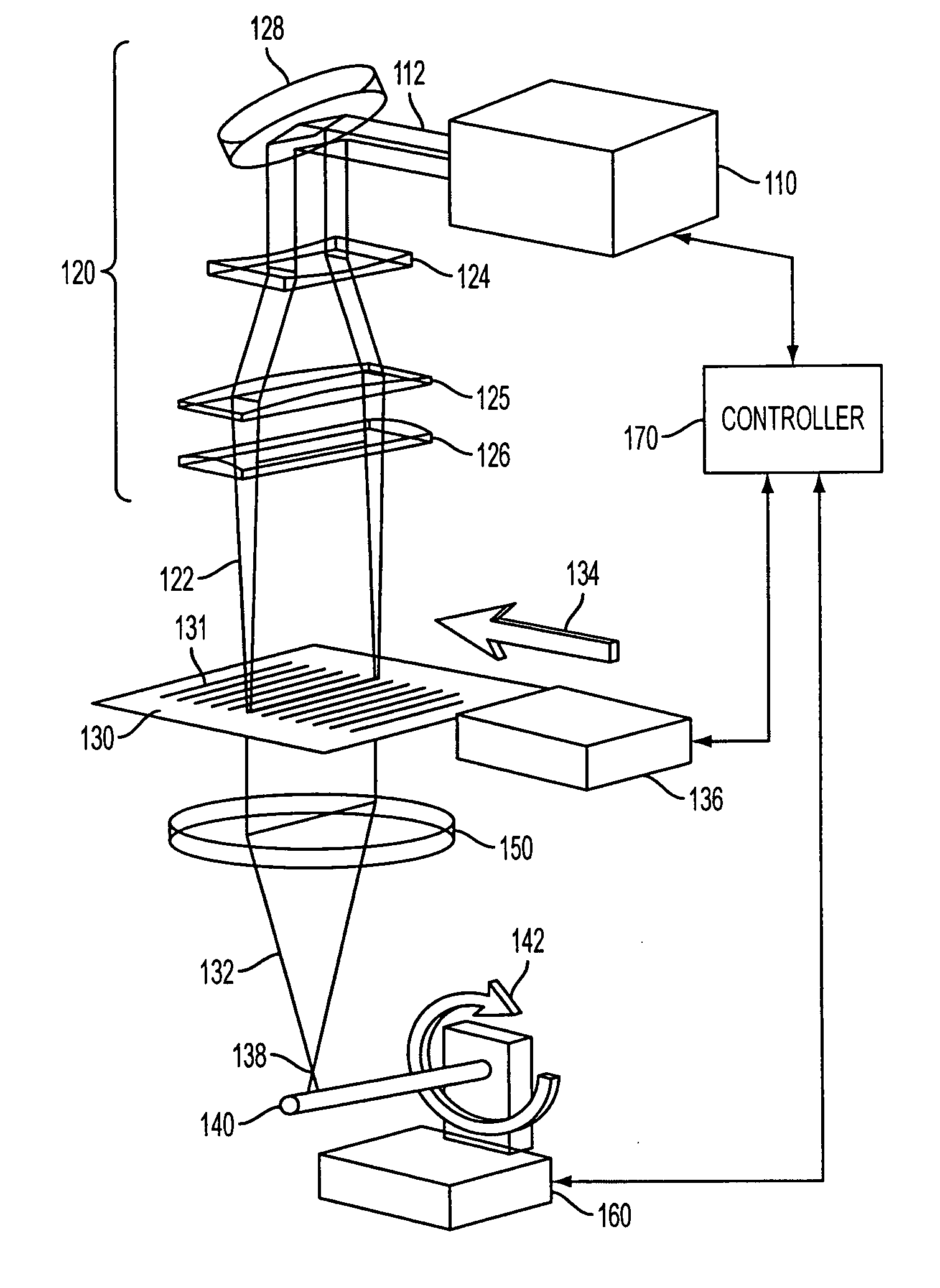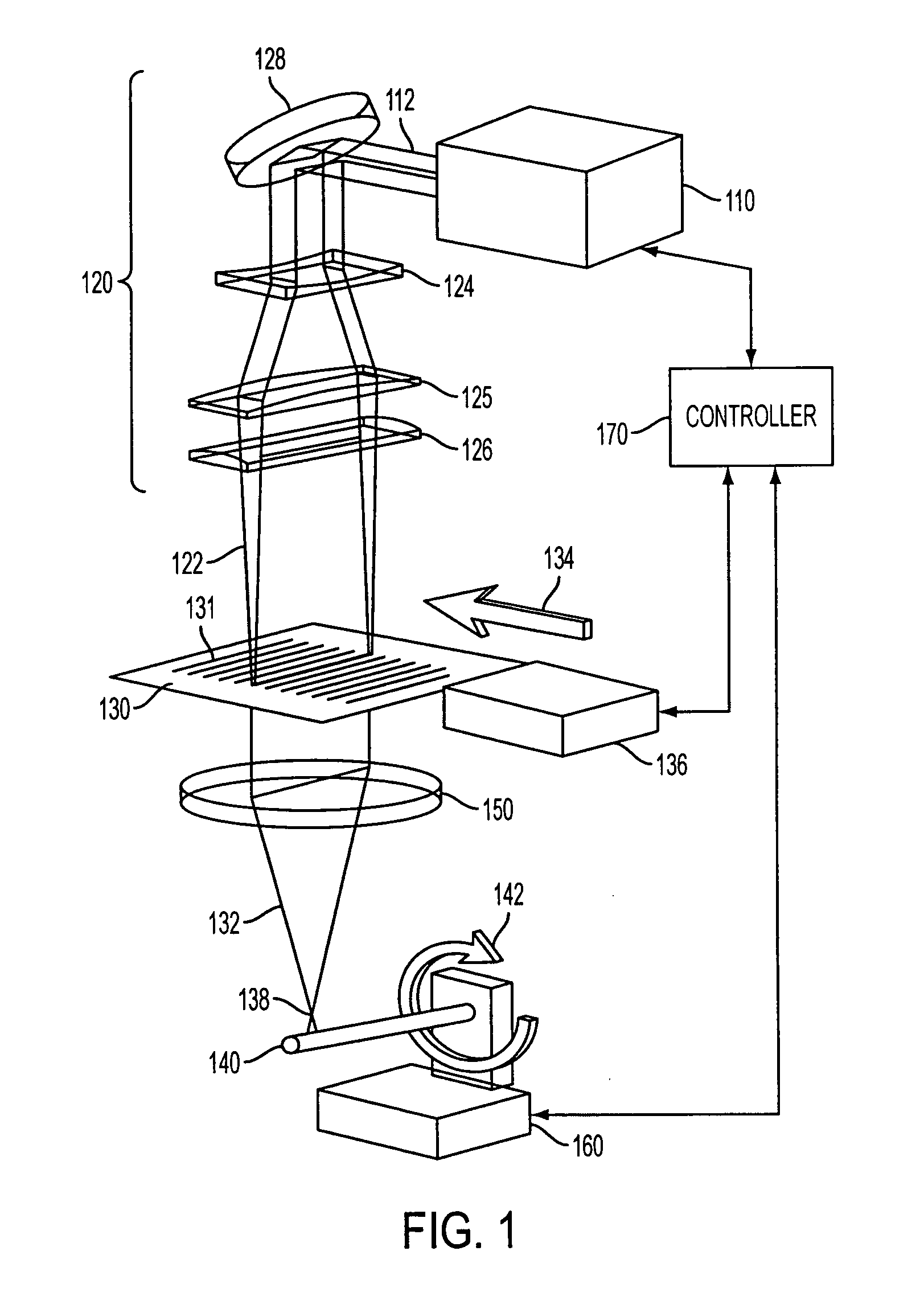System and method for laser machining
a laser machining and laser technology, applied in the field of laser machining, can solve the problems of affecting the resolution of the features that are machined, affecting the quality of the finished product, and certain types of materials may be more difficult to machine with lasers
- Summary
- Abstract
- Description
- Claims
- Application Information
AI Technical Summary
Benefits of technology
Problems solved by technology
Method used
Image
Examples
Embodiment Construction
[0016] In general, a laser machining system and method, consistent with embodiments of the present invention, uses a shaped laser beam, such as a long, narrow beam, and scans the beam across a mask having an aperture pattern. The pattern on the mask is imaged onto a workpiece and the patterned laser beam selectively removes material from the workpiece. The laser may use a longer wavelength (e.g., 248 nm) and the beam may be scanned at a high rate of speed to reduce the dissipation of the residual thermal energy in the material, as will be described in greater detail below.
[0017] In one application, an exemplary system and method may be used to machine a complex pattern with relatively high resolution and high speeds into a curved surface of a rotating workpiece using a technique referred to as rotational coordinated opposing motion (COMO). The workpiece in the exemplary application may be made of a sensitive material. As used herein, sensitive material refers to a material that has...
PUM
| Property | Measurement | Unit |
|---|---|---|
| wavelength | aaaaa | aaaaa |
| wavelength | aaaaa | aaaaa |
| wavelength | aaaaa | aaaaa |
Abstract
Description
Claims
Application Information
 Login to View More
Login to View More - R&D
- Intellectual Property
- Life Sciences
- Materials
- Tech Scout
- Unparalleled Data Quality
- Higher Quality Content
- 60% Fewer Hallucinations
Browse by: Latest US Patents, China's latest patents, Technical Efficacy Thesaurus, Application Domain, Technology Topic, Popular Technical Reports.
© 2025 PatSnap. All rights reserved.Legal|Privacy policy|Modern Slavery Act Transparency Statement|Sitemap|About US| Contact US: help@patsnap.com



